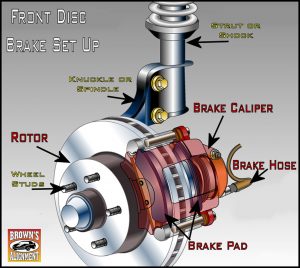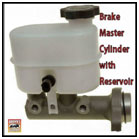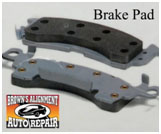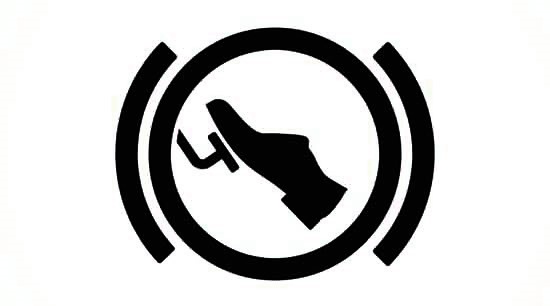Your car’s braking system is critical to your safety on the road. In this blog post, we’ll take off the wheels and show you how braking systems work and highlight warning signs that should prompt you to get them checked.
Understanding the Basics:
-
Components of a Brake System:
- Brake Pedal: Initiates the braking process.
- Brake Master Cylinder: Converts pedal pressure into hydraulic pressure.
- Brake Lines: Carry hydraulic fluid to the brake calipers.
- Brake Calipers: Squeeze brake pads against the rotors to create friction.
- Brake Rotors (or Discs): Circular metal discs attached to the wheel hubs. When you press the brake pedal, the calipers squeeze the brake pads against the rotors, creating friction that slows down and stops the vehicle.
-
Hydraulic System:
 When you press the brake pedal, brake fluid transmits force from the master cylinder to the brake components. This pressurized fluid is transmitted through brake lines to either brake calipers (in disc brake systems) or wheel cylinders (in drum brake systems). The pressure generated causes friction between brake pads and rotors (or brake shoes and drums), resulting in the slowing down or stopping of the vehicle. Once you release the brake pedal, the system resets, making it ready for the next braking action. This hydraulic process ensures a quick and efficient response, providing reliable control over the vehicle’s speed and stopping power.
When you press the brake pedal, brake fluid transmits force from the master cylinder to the brake components. This pressurized fluid is transmitted through brake lines to either brake calipers (in disc brake systems) or wheel cylinders (in drum brake systems). The pressure generated causes friction between brake pads and rotors (or brake shoes and drums), resulting in the slowing down or stopping of the vehicle. Once you release the brake pedal, the system resets, making it ready for the next braking action. This hydraulic process ensures a quick and efficient response, providing reliable control over the vehicle’s speed and stopping power.
- Friction Material:
Brake pads and shoes create friction to slow down the wheels. The resulting friction converts kinetic energy into heat, ultimately slowing down and stopping the vehicle. Pads and shoes wear out over time and require replacement.
Warning signs that something may be wrong with your car’s braking system:
- Squeaking or Grinding Noises:
- Indicates worn brake pads or damaged rotors. Addressing this early can prevent more extensive damage.
- Vibrations or Pulsations:
- Warped brake rotors can cause the steering wheel or brake pedal to vibrate. Seek professional inspection to prevent further damage.
- Soft or Spongy Brake Pedal:
- Could be a sign of air or moisture in the brake lines. Consult a professional mechanic to diagnose and repair the brake system if necessary.
- Dashboard Warning Lights:
- Modern cars have sensors that detect brake system issues. Don’t ignore warning lights; get your brakes checked promptly.
- Reduced Braking Performance:
- If your car takes longer to stop or the braking feels less effective, it’s time for an inspection. Reduced braking performance may be due to overheating or fluid issues.
The Final Brake-down
Understanding your car’s braking system and recognizing warning signs can save you from potential accidents and costly repairs. Regular maintenance and prompt attention to issues ensure that your brakes are reliable when you need them most. Remember, your safety is in your hands, or rather, your foot on the brake pedal!
Total Views: 1,801

 Brake pads and shoes create friction to slow down the wheels. The resulting friction converts kinetic energy into heat, ultimately slowing down and stopping the vehicle. Pads and shoes wear out over time and require replacement.
Brake pads and shoes create friction to slow down the wheels. The resulting friction converts kinetic energy into heat, ultimately slowing down and stopping the vehicle. Pads and shoes wear out over time and require replacement.